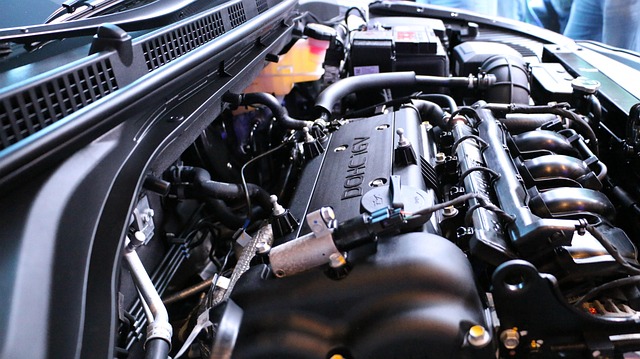Register Car California: Step-by-Step with DMV VIN Verifier
“Looking to register your car in California? This comprehensive guide breaks down the process step by step. Understand the state’s unique registration requirements, gather essential documents, and pre…….

“Looking to register your car in California? This comprehensive guide breaks down the process step by step. Understand the state’s unique registration requirements, gather essential documents, and prepare for your trip to the DMV. We’ll walk you through verifying vehicle identity using a DMV VIN verifier, paying fees, and receiving your custom plates. Simplify the process today with our expert tips!”
- Understand California Car Registration Requirements
- Gather Necessary Documents for Registration
- Visit the DMV: Step-by-Step Process
- Verify Vehicle Identity with VIN (DMV Service)
- Pay Registration Fees and Receive Your Plate
Understand California Car Registration Requirements

Before registering your car in California, it’s crucial to understand the state’s specific requirements. The California Department of Motor Vehicles (DMV) mandates several steps for new and used vehicle registration, with a strong emphasis on accuracy and security. One critical component is the Vehicle Identification Number (VIN) inspection, often facilitated through a DMV-approved vin verifier. This process ensures that the vehicle’s details match the information provided by the manufacturer, helping to prevent fraud.
A mobile vin verification service can be particularly convenient for California residents. By using a reputable mobile vin verifier, you streamline the initial registration process and ensure compliance with state laws. This step involves inputting your VIN into an online system that cross-references it against national databases, providing instant validation of the vehicle’s history and ensuring it meets all legal standards for registration.
Gather Necessary Documents for Registration

Before you begin the registration process, ensure you have all the required documents. The California Department of Motor Vehicles (DMV) will need several key pieces of information and forms to complete your car’s registration. One crucial document is the Vehicle Identification Number (VIN) verifier, which can be obtained through a mobile VIN inspection or a traditional vin inspection service. This unique identifier is essential for identifying your vehicle accurately.
Additionally, gather important paperwork such as proof of ownership, which could be a title or a bill of sale, and valid identification like a driver’s license. Other necessary documents may include registration fees, insurance documentation, and any emissions test results if applicable. It’s always a good idea to check the DMV’s website for the most up-to-date list of required paperwork before you visit or contact them.
Visit the DMV: Step-by-Step Process

Visiting the DMV is a crucial step in registering your car in California. Here’s a straightforward guide on how to navigate this process. Start by scheduling an appointment online or visiting a local DMV office, ensuring you bring all required documents like your valid driver’s license, proof of insurance, and vehicle registration from your previous state (if applicable). Once at the DMV, locate the DMV VIN verifier—a tool that confirms the vehicle’s identity using its unique Vehicle Identification Number (VIN). This step is essential for ensuring the car’s history is accurate.
After verification, you’ll need to complete application forms, including the California Registration Application and Title Transfer form if applicable. A title transfer is required when registering a vehicle for the first time or changing ownership. Pay the registration fees, which vary based on your vehicle type and age. For a more convenient experience, consider options like mobile vin inspection or vin inspection services that can help with paperwork and VIN verification at your location, saving you a trip to the DMV.
Verify Vehicle Identity with VIN (DMV Service)

Before registering your car in California, it’s crucial to ensure the vehicle’s identity is verified using its Vehicle Identification Number (VIN). The DMV offers a convenient service for this purpose—the VIN verifier. By utilizing this tool, you can confirm that the vehicle is as described and free from any discrepancies or potential theft. This step is essential during the registration process as it helps protect against fraud and ensures only legitimate vehicles are on California’s roads.
A mobile VIN verification or inspection allows for added convenience. You can perform this check at your preferred location, whether it’s at home or a local auto shop. This method streamlines the preparation for car registration, making it easier for both new and existing vehicle owners to stay up-to-date with California’s motor vehicle regulations.
Pay Registration Fees and Receive Your Plate

After submitting your application and necessary documents to the DMV, the next step is to pay the registration fees. These fees vary depending on your vehicle type and other factors, so be sure to check the current rates on the official California DMV website. You can typically pay online, by phone, or in person at a DMV field office. Once your payment is processed, you’ll receive your license plate. The DMV will also provide you with a registration card that you must display in your vehicle along with your license plates.
Remember to use the DMV’s official services for registration, including their vin verifier tools like the mobile vin inspection or mobile vin verification process, to ensure your vehicle’s information is accurately recorded and to avoid any potential issues or scams.
Registering a car in California involves understanding specific requirements, gathering essential documents, and visiting a DMV office. By following these steps, including verifying vehicle identity with a VIN check using a reliable dmv vin verifier, you can complete the process smoothly. Remember to pay all necessary registration fees and receive your unique license plate as proof of ownership. This ensures your vehicle is legal on California’s roads and helps maintain a robust automotive registry system.







